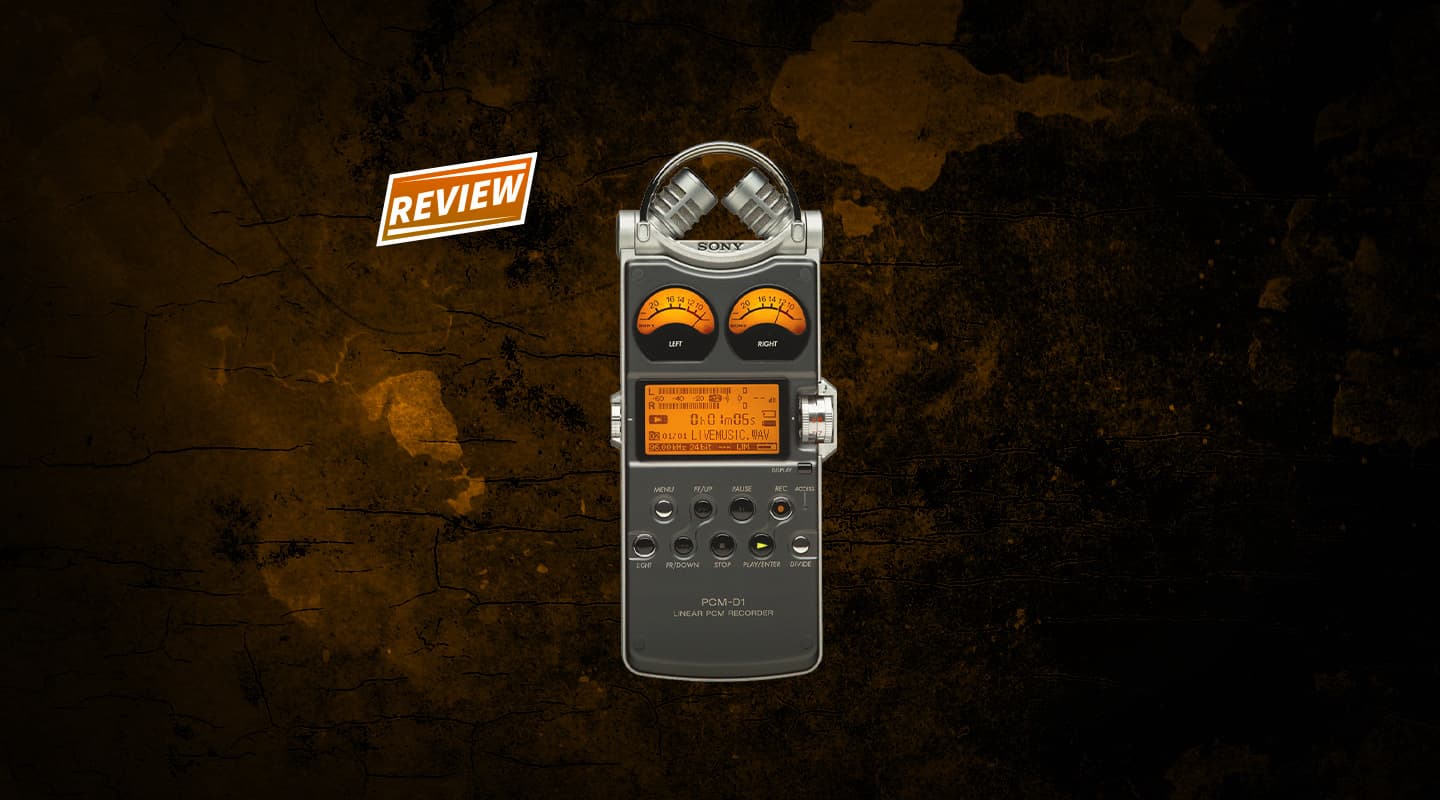
Review: Sony PCM-D1
Portable recorders that double as props for sci-fi films are worth their weight in ectoplasma.
You have to agree, it looks pretty neat. Like one of those ectoplasma-detecting gadgets the lads in Supernatural use to check haunted houses for poltergeists and demonic nasties. I don’t know about ectoplasma, but if there were any sounds of chain-rattling and dreadful moaning to be heard in the room – much like in Paris Hilton’s gaol cell – you can be sure Sony’s new PCM-D1 Linear Recorder would pick up every bit of it.
Sony has released a serious piece of gear into the hand-held, personal recorder market. With its high quality and features it seems a little too good to be waving at spruiking politicians on the steps of parliament house. Is it a high-end personal recorder or a compact field unit?
IT’S A SON-X-Y
The recorder is designed around a pair of X-Y pattern condenser microphones mounted at the top of the unit. These mics can be angled upwards around 30 degrees or downward 45 degrees. Sony claims the microphones were specifically developed to provide increased levels of sensitivity and take advantage of the unit’s silent operation, since there’s no cassette or minidisk mechanism to generate internal noise. Files are recorded to 4GB of Flash memory or Memory Stick Pro.
Two analogue meters with peak lamps bring a cool retro look and the LCD display has metering too. Experimenting with the PCM-D1, you soon learn that Sony’s hype about the microphone’s enhanced performance is warranted and you need to rethink your approach to setting levels. Handling noise is apparent at high gains, by the way – nothing too worrying though. A -20dB attenuator is included but if you still can’t get the results you want, a microphone input is provided, too. Format options range from 24-bit/96k PCM stereo, down to 16-bit/22.05k for longer record times.
Weighing in at 525 grams the unit has a solid feel, built as it is, from 1mm thick pressed titanium. The knobs for volume and record levels are smooth-working with the latter protected against accidental movement. Transport buttons are recessed with a shallow, but positive action. The case of the PCM-D1 is made of titanium. There is nothing plastic or cheap about this recorder at all. It looks and feels like a rugged field unit.
ON LOCATION
The quality of the recordings was impressive, in particular the stereo spectrum it created. Any kind of on-location recordings will dump straight into a video editing program and have a good audio-to-vision orientation. Connections for this are either USB or digital out.
The PCM-D1 uses supplied rechargeable batteries or it will take four standard AAs. A set of spares in your pocket will always be a good idea. The unit is a little power-hungry.
I had the opportunity to road test the recorder in our theatre where a local eisteddfod is running (‘eisteddfod’ is an ancient Welsh word meaning “irritating parents who fail to notice their child’s utter lack of talent”). An eight-year old boy attempting to play the theme from Titanic on violin was faithfully and accurately recorded – unfortunately (there are some things that microphones should never have to deal with). My sneaking into the back rows highlighted one problem with the PCM-D1. There’s a switchable light for the display and meters, but the transport buttons have nothing. Play, pause and record come to life only after you’ve pressed them. In darkness you’re struggling to select the right buttons.
Two other minor quibbles. While many field recorders don’t have internal speakers the PCM-D1’s size does encourage all-purpose use, including as a Dictaphone – it’s nice to avoid headphones sometimes. Maybe the smallest of piezo speakers for lo-fi monitoring would have been useful? The RRP of $2990 for the PCM-D1 is daunting perhaps, but probably justified by its performance, portability and sheer quality of construction. The PCM-D1 will be rattling around in your kit bag for many years.
Field recording is a specialised business and conjures up images of lugging around enormous shoulder bags and furry microphones on booms. Sometimes this is overkill for small jobs, but there’s traditionally no other way to get good quality recordings. I reckon Sony have come up with the answer.
















RESPONSES